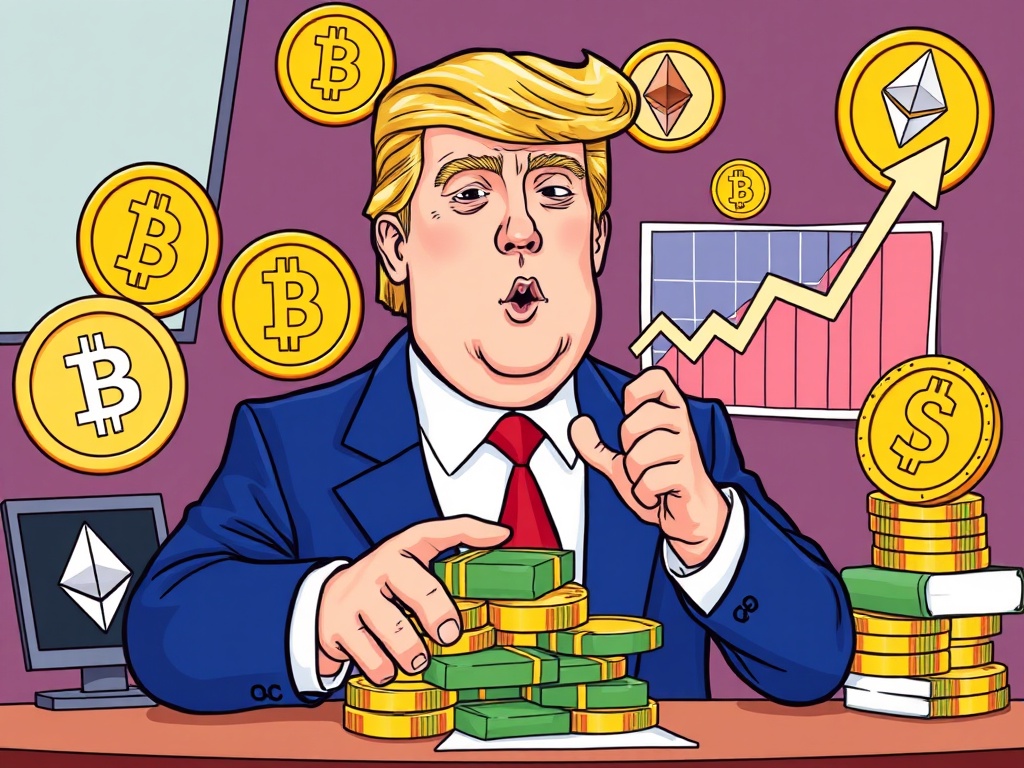BitcoinWorld

Bitcoin Futures Volume: Unveiling the Summer Slump’s Impact
The cryptocurrency market, ever-dynamic and full of surprises, often reveals its underlying currents through subtle shifts in trading activity. Recently, a significant trend has emerged from the world of derivatives: Bitcoin futures volume has taken a noticeable dip. Is this just a temporary lull, or a signal of deeper market sentiment? Let’s dive into the data to understand what this seasonal shift means for the broader crypto landscape.
What’s Happening with Bitcoin Futures Volume?
According to insightful analysis from The Block, June witnessed a sharp 20% month-over-month decline in Bitcoin (BTC) futures volume, settling at approximately $1.55 trillion. This isn’t an isolated incident; rather, it marks a continuation of a pattern observed over the past three years – a consistent midyear slowdown. To put it into perspective, the average monthly volume for the first five months of 2025 stood significantly higher at $1.93 trillion.
- Significant Drop: A 20% reduction in monthly volume indicates a considerable decrease in institutional and large-scale trader activity.
- Historical Context: This dip mirrors similar trends seen in both 2023 and 2024, suggesting a predictable, seasonal pattern.
- Anticipated Rebound: The Block’s analysis concludes that volumes typically rebound later in the year, aligning with historical market cycles.
This data on futures trading data offers a crucial window into the pulse of the market. While spot trading reflects immediate buying and selling, futures contracts provide a look at speculative interest and institutional positioning, making their volume a key indicator.
Why the Seasonal Crypto Slowdown?
The consistent midyear decline in Bitcoin futures volume begs the question: why does this happen? Several factors likely contribute to this “summer slump” phenomenon:
- Institutional Vacation Schedules: Many institutional traders and fund managers take their summer breaks during June, July, and August. This naturally leads to reduced activity and lower trading volumes.
- Reduced Retail Interest: Retail investors might also divert their attention from intensive trading during summer months, focusing on holidays and leisure activities.
- Macroeconomic Lull: Often, major macroeconomic announcements or significant policy shifts tend to slow down during the summer, leading to less volatility and thus less incentive for high-volume speculative trading.
- Market Consolidation: Periods of lower volume can sometimes indicate a phase of consolidation after periods of high volatility or significant price movements, as the market digests previous trends.
Understanding these underlying reasons is vital for anyone tracking crypto market trends, as it helps differentiate between a genuine bearish sentiment and a predictable seasonal ebb.
How Does This Impact BTC Price?
While declining futures volume doesn’t directly dictate BTC price, it certainly influences market dynamics and sentiment. Lower liquidity in the futures market can lead to:
- Increased Volatility on Lower Volume: Smaller trades can have a disproportionately larger impact on price movements when overall volume is low, potentially leading to more erratic price swings.
- Reduced Price Discovery: With fewer participants and less capital flowing through the futures market, the efficiency of price discovery can diminish.
- Investor Caution: A sustained period of low volume might make some investors more cautious, waiting for clearer signals before committing significant capital.
However, it’s also important to remember that these slowdowns are often followed by rebounds. Historical data suggests that the market often re-energizes in the latter half of the year, potentially setting the stage for renewed interest and upward price momentum for BTC price.
Navigating the Current Crypto Market Trends
For traders and investors, recognizing these crypto market trends is crucial for making informed decisions. Here are some actionable insights:
- Don’t Panic: A seasonal decline is not necessarily a sign of a fundamental market breakdown. Understand the historical context.
- Focus on Long-Term: For long-term holders, these periods can present opportunities for accumulation if prices dip due to low liquidity.
- Watch for Catalysts: Keep an eye out for potential catalysts in Q3/Q4, such as major conferences, regulatory developments, or significant technological upgrades, which could signal the end of the slowdown.
- Risk Management: During periods of lower liquidity, managing risk becomes even more critical. Consider smaller position sizes or wider stop-losses if actively trading.
The current seasonal crypto slowdown offers a moment for reflection and strategic planning rather than reactive fear. It’s a natural part of the market’s ebb and flow.
What’s Next for Futures Trading Data?
As we move past the summer months, the expectation, based on historical futures trading data, is a gradual return of liquidity and increased activity. This typically aligns with:
- Return of Institutional Capital: As institutions resume full operations post-summer, their capital inflows tend to increase.
- Renewed Retail Interest: Retail traders often return with fresh capital and renewed enthusiasm as the year progresses.
- Year-End Rallies: Historically, the latter part of the year has seen increased market activity, sometimes leading to “year-end rallies” across various asset classes, including cryptocurrencies.
Monitoring this rebound in Bitcoin futures volume will be key to gauging the market’s overall health and potential direction for the rest of the year. While the summer dip is a reality, it often serves as a prelude to a more dynamic second half.
Conclusion: The Rhythm of the Crypto Market
The recent decline in Bitcoin futures volume serves as a timely reminder of the cyclical nature of financial markets, including the volatile world of cryptocurrencies. This predictable summer slowdown, rooted in historical patterns and seasonal behaviors, is not necessarily a cause for alarm but rather an expected phase in the market’s annual rhythm. By understanding these crypto market trends and leveraging historical futures trading data, investors and traders can navigate these periods with greater confidence and strategic foresight. As the summer winds down, the anticipation builds for a potential resurgence in activity, reaffirming the resilience and long-term potential of Bitcoin and the broader digital asset space.
To learn more about the latest Bitcoin market trends, explore our article on key developments shaping Bitcoin price action.
This post Bitcoin Futures Volume: Unveiling the Summer Slump’s Impact first appeared on BitcoinWorld and is written by Editorial Team





